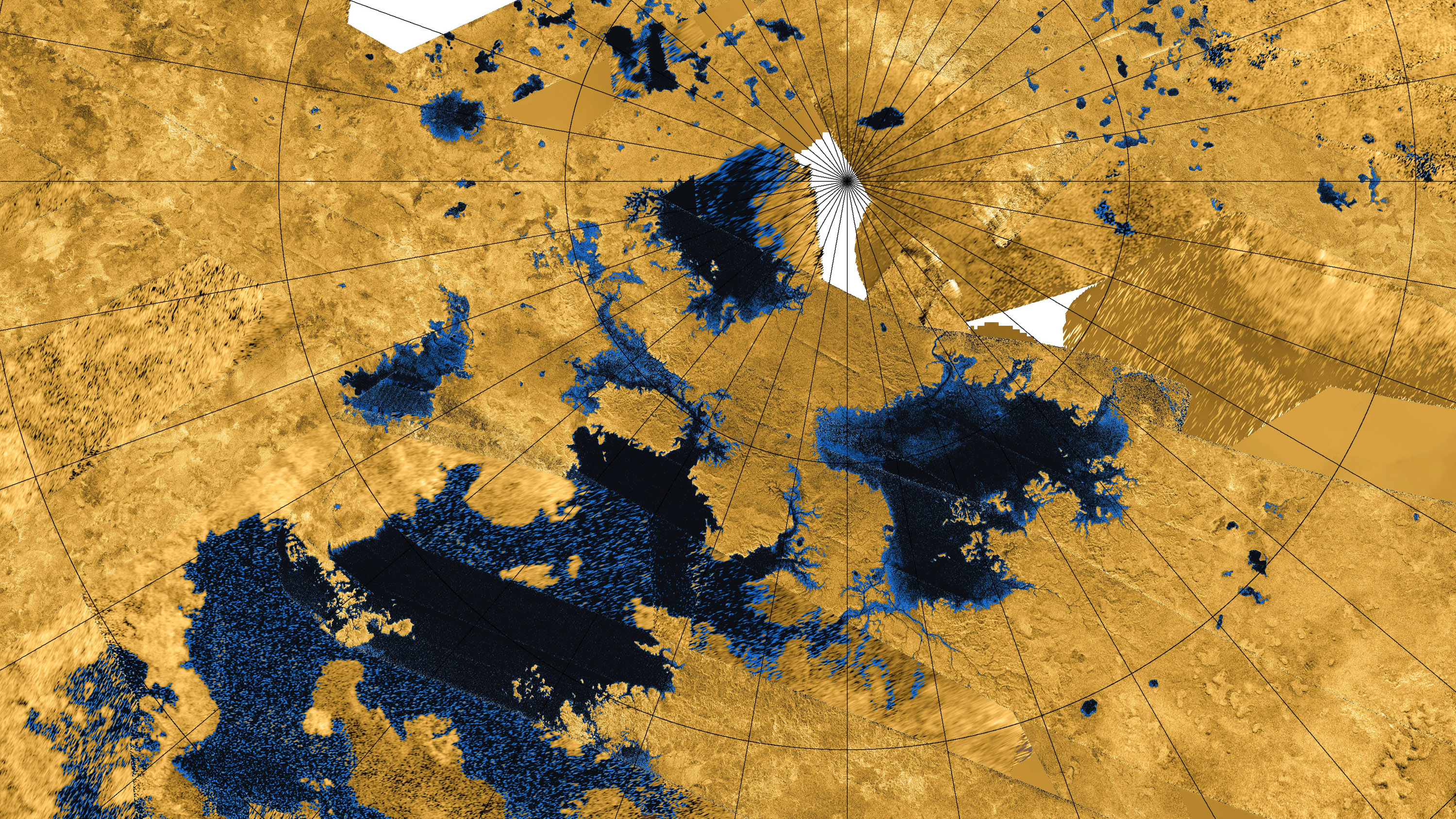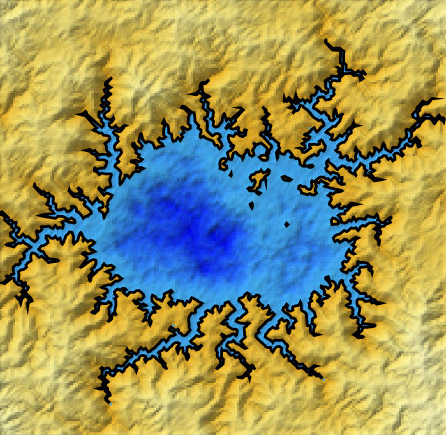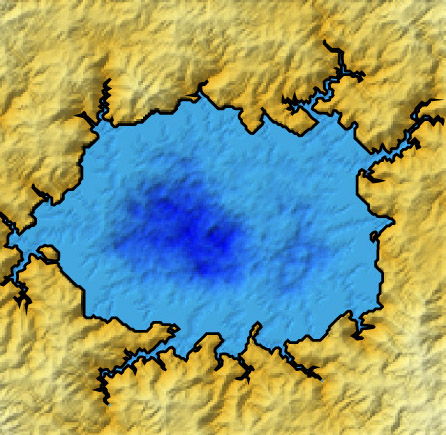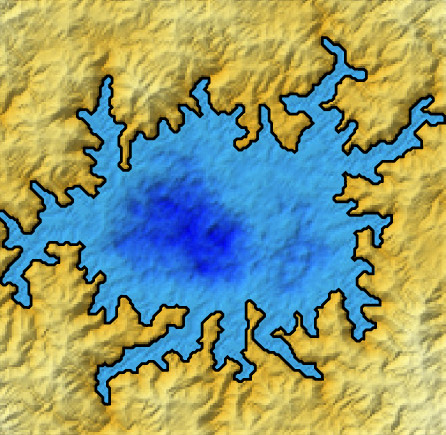Lakes and seas on Titan may be shaped by waves
The bodies of liquid methane and ethane on Saturn’s largest moon have been a source of debate for years. Simulations shed new light.

Saturn’s moon Titan is the only body in the solar system besides Earth that has active lakes and seas—in this case thought to have formed as liquid methane and ethane flooded a landscape crisscrossed with river valleys. Now MIT geologists have found evidence that those mysterious features may be shaped by waves.
Until now, scientists have found indirect and conflicting signs of wave activity by studying images of Titan’s surface taken by NASA’s Cassini spacecraft between 2004 and 2017. “Some people who tried to see evidence for waves didn’t see any and said, ‘These seas are mirror-smooth,’” says Rose Palermo, PhD ’22, a research geologist at the US Geological Survey, who is first author of a paper on the work. “Others said they did see some roughness on the liquid surface but weren’t sure if waves caused it.”
The MIT team took a different approach: investigating the shoreline shape. First they modeled the ways in which a lake’s shores can erode on Earth; then they used their model to determine what could have eroded the shorelines in Cassini’s images. Waves, they found, were the most likely explanation.
“If we could stand at the edge of one of Titan’s seas, we might see waves of liquid methane and ethane lapping on the shore and crashing on the coasts during storms,” says Taylor Perron, a professor of Earth, Atmospheric, and Planetary Sciences. “And they would be capable of eroding the material that the coast is made of.”
The researchers simulated how hundreds of different shoreline shapes would evolve under each of three scenarios: no coastal erosion; erosion driven by waves; and “uniform erosion,” which occurs when liquid passively dissolves a coast’s material or the coast gradually sloughs off under its own weight.



In the model, an initial shoreline (first) evolves differently under conditions of wave erosion (second) and uniform erosion (third).
“We had the same starting shorelines, and we saw that you get a really different final shape under uniform erosion versus wave erosion,” Perron says. “They all kind of look like the Flying Spaghetti Monster because of the flooded river valleys, but the two types of erosion produce very different endpoints.”
The team mapped the shorelines of the four large seas that were completely imaged by Cassini and applied their modeling to see which erosion mechanism best explained their shapes. They found that all four shorelines resembled those produced by the wave-driven model. “We found that if the coastlines have eroded, their shapes are more consistent with erosion by waves than by uniform erosion or no erosion at all,” Perron says.
The researchers, who note that their results must still be confirmed by direct observation, are now working to determine how strong Titan’s winds must be in order to stir up waves that could repeatedly chip away at the coasts. They also hope to decipher, from the shape of Titan’s shorelines, the directions from which the wind is predominantly blowing.
“Titan presents this case of a completely untouched system,” Palermo says. “It could help us learn more fundamental things about how coasts erode without the influence of people, and maybe that can help us better manage our coastlines on Earth in the future.”
Keep Reading
Most Popular

Happy birthday, baby! What the future holds for those born today
An intelligent digital agent could be a companion for life—and other predictions for the next 125 years.

This researcher wants to replace your brain, little by little
The US government just hired a researcher who thinks we can beat aging with fresh cloned bodies and brain updates.

Here’s how people are actually using AI
Something peculiar and slightly unexpected has happened: people have started forming relationships with AI systems.
Stay connected
Get the latest updates from
MIT Technology Review
Discover special offers, top stories, upcoming events, and more.
